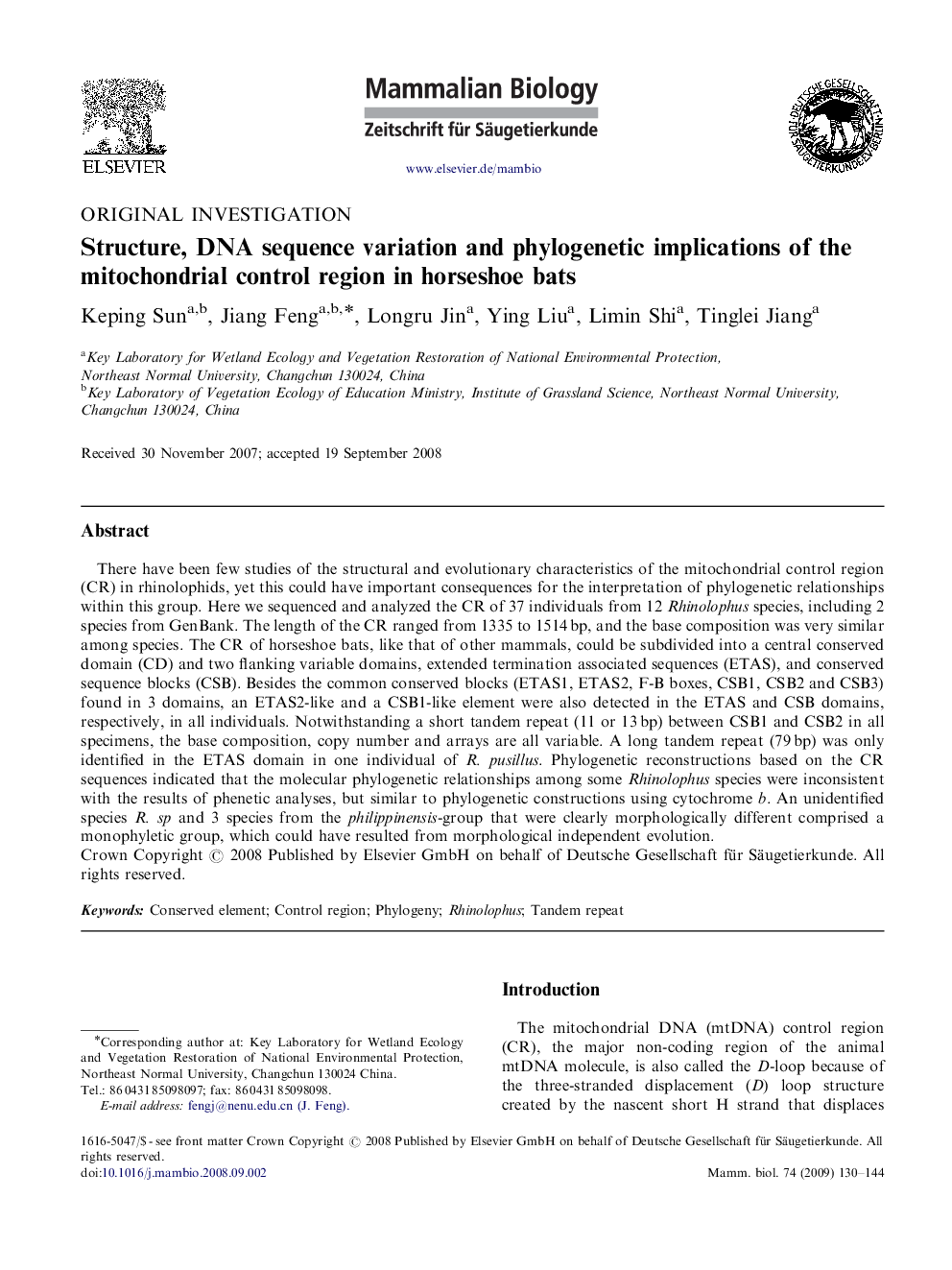| Article ID | Journal | Published Year | Pages | File Type |
|---|---|---|---|---|
| 2193855 | Mammalian Biology - Zeitschrift für Säugetierkunde | 2009 | 15 Pages |
There have been few studies of the structural and evolutionary characteristics of the mitochondrial control region (CR) in rhinolophids, yet this could have important consequences for the interpretation of phylogenetic relationships within this group. Here we sequenced and analyzed the CR of 37 individuals from 12 Rhinolophus species, including 2 species from GenBank. The length of the CR ranged from 1335 to 1514 bp, and the base composition was very similar among species. The CR of horseshoe bats, like that of other mammals, could be subdivided into a central conserved domain (CD) and two flanking variable domains, extended termination associated sequences (ETAS), and conserved sequence blocks (CSB). Besides the common conserved blocks (ETAS1, ETAS2, F-B boxes, CSB1, CSB2 and CSB3) found in 3 domains, an ETAS2-like and a CSB1-like element were also detected in the ETAS and CSB domains, respectively, in all individuals. Notwithstanding a short tandem repeat (11 or 13 bp) between CSB1 and CSB2 in all specimens, the base composition, copy number and arrays are all variable. A long tandem repeat (79 bp) was only identified in the ETAS domain in one individual of R. pusillus. Phylogenetic reconstructions based on the CR sequences indicated that the molecular phylogenetic relationships among some Rhinolophus species were inconsistent with the results of phenetic analyses, but similar to phylogenetic constructions using cytochrome b. An unidentified species R. sp and 3 species from the philippinensis-group that were clearly morphologically different comprised a monophyletic group, which could have resulted from morphological independent evolution.
